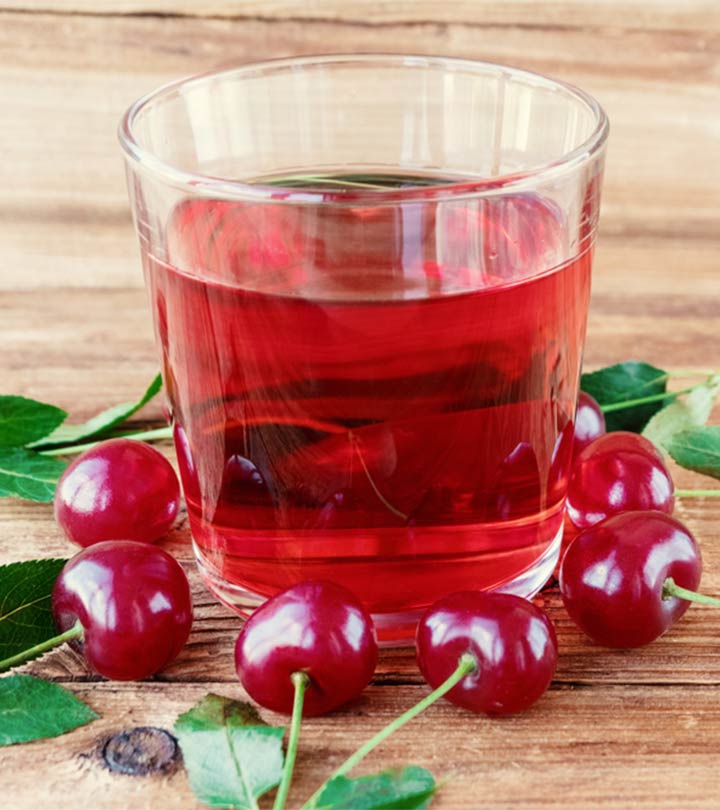Ingredients:
- 1.1 lb cherries 3 cups; ripe and fresh or frozen; use sweet or sour cherries (like Montmorency)
- 1/2 cup water or more to your liking; needed to help with blending, if using a blender
Instructions:
Juicer Method
- Wash the cherries and remove the pits (which can be hard on juicers and may even break them – check the post for several methods on how to remove the pits).
- Simply feed the cherries through the juicer chute and let the machine do all the work.I recommend reprocessing the pulp a further 1-2 times to extract as much of the juice as possible from the fruit.
Blender Method
- As this method relies on water to help with the blending process, this juice is naturally diluted and won’t be as sweet or flavorful as the juicer version.Wash and remove the cherry pits.
- Transfer the fruit to the blender with a bit of cold water (around ¼ cup per 1 cup of cherries) and blend until smooth and juicy.
- Enjoy pulpy if preferred. Otherwise, pass the cherry juice through a sieve or nut milk bag to remove the pulp.
Mashing Method
- Rinse and pit the cherries.
- Transfer them to a large bowl or flat dish (I find the latter easier) and use a potato masher or similar tool to mash the cherries to release their juice.If you have one, a potato ricer works wonderfully with frozen and thawed cherries. However, it needs to be done in small batches of one layer at a time.
- Transfer the cherry mush to a sieve or nut milk bag over a large bowl and squeeze/press the flesh to collect as much juice as possible.
Hand Squeezed Method
- I don’t recommend attempting this method unless your cherries are relatively soft or they were previously frozen and thawed, which naturally softens them.Rinse the cherries, then transfer them to a nut milk bag (with or without the pits removed).
- Simply use your hand to squeeze and mash the cherries over a glass bowl to extract as much juice as possible.Note: this method yields the least amount of juice (3 cups of cherries produced 1 cup of juice).
Cherry Juice Concentrate
- This is the only method for how to make cherry juice that uses heat and creates more of a tart cherry juice concentrate.Wash the cherries first and remove the stems, but there’s no need to remove the pits.
- Transfer the fruit and water (add 2 cups of water per 1 lb of cherries) to a saucepan, bring to a boil, and then simmer for 20 minutes.
- Drain through a fine-mesh sieve, pressing on the fruit with a spoon to release as much juice as possible.
- Transfer the liquid back to the saucepan and add sugar to taste. Simmer until the sugar has dissolved, then remove from the heat.To make cherry syrup, continue to simmer the juice-sugar mixture until it reduces and thickens into a light syrupy consistency (it will thicken as it cools).If you want to water bath can this juice, then transfer it to the cans while hot. Otherwise, allow it to cool to room temperature before transferring it to containers.
Storage Instructions
- Store: For maximum nutrients and freshness, I recommend consuming homemade cherry juice immediately. However, any leftovers can be stored in a covered bottle/jar in the fridge for a further 1-2 days.The cherry juice concentrate will last closer to 10-14 days as the heat and sugar act as preservatives.Freeze: You can freeze the cherry juice for 3 months in Ziplock bags, freezer-safe jars, or ice cube trays, depending on the portion sizes. Allow it to thaw in the fridge overnight before enjoying OR blend from frozen with a bit of liquid for a cherry slushy.
Notes
- Frozen cherries juice easier: During the freezing/thawing process, the cherries soften and become far easier to juice, making them great for any non-machine-based juicing method. For the best flavor, you can freeze ripe cherries yourself rather than rely on pre-frozen fruit bags.
- Color will vary: Any method of juicing cherries that creates a foam tends to lead to discoloration of the juice (leaning towards brown). It’s perfectly safe to drink but just doesn’t look as nice.
- Adjust the sweetness to taste: Depending on the type of cherries you use, you may need to add some sugar. You can use regular sugar, maple syrup or honey, or even a sugar-free sweetener like erythritol, to taste.
- Choose soft cherries: If they’re too firm, they’ll be very hard to juice unless you use a blender or juicer method.
